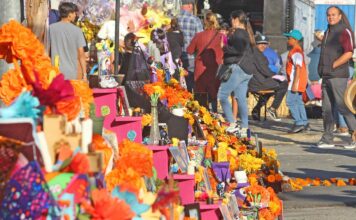By Colleen Grzan WERC
You’ve heard of blood banks and tissue banks, where humans donate to help save other people’s lives. But did you know that birds can “donate” to a feather bank so that other birds can survive in the wild? Feathers from birds that have died and feathers that have molted (shed) naturally are saved, and they’re used to replace the broken or damaged feathers of birds that have been injured.
The technique, called imping, was first practiced during medieval falconry, as trained hawks and falcons were very highly prized as sporting birds. The process has changed little in the years since. The new feather is grafted onto the broken feather shaft usually by means of a wooden “pin” and glue. If the bird is in good health, it can then be released back to the wild, able to soar high in the sky and hunt for food. New feathers will grow out to replace the imped ones during the bird’s normal molt.
The red-tailed hawk pictured was transferred to the Wildlife Education and Rehabilitation Center in June for a few months of flight time in the large aviary to build up its muscles before being released. It was noticed at the time of its arrival that five of the 10 primary (“fingertip”) feathers on the left wing were broken.
After more than two months, new feathers had still not grown out. It was imperative that the beautiful bird-of-prey be released as soon as possible to give it time to adjust to the wild and find food before winter weather set in. But birds-of-prey depend on perfect feathers for perfect flight for their survival in the wild, and this hawk seemed destined to spend the winter enclosed in the aviary, not flying free.
Enter Dr. Curt Moran, the veterinarian at the Family Pet Care Center in Hollister, who is a well-known authority in imping feathers. Moran expertly grafted five new feathers, supplied by WERC’s “donor birds,” onto the hawk’s wing. When the doctor released the hawk south of Hollister, it first flew low, adjusting to its repaired wing, and then quickly and smoothly gained height. The imping was a success. When Moran last sighted the hawk, it was soaring high in the sky and headed for the wild blue yonder.
WERC, the Wildlife Education and Rehabilitation Center, provides the community with rehabilitation services for orphaned, injured and sick native wildlife. Through its educational programs, WERC encourages a peaceful coexistence between civilization and our native wildlife. WERC does not receive operating funds from any government agency to care for wildlife and is not allowed to charge a fee for this service. It is supported solely by donations from businesses and the public. To contact WERC, call (408) 779-9372 or visit www.werc-ca.org.













